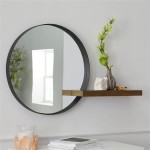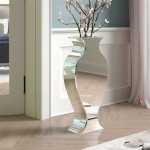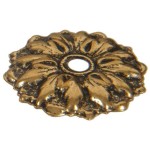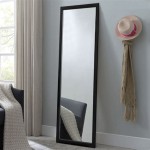What Is Mirror Box Therapy?
Mirror box therapy is a unique and non-invasive treatment approach used to address chronic pain, phantom limb pain, and even some neurological conditions. Developed by Dr. Vilayanur Ramachandran, a renowned neuroscientist, this therapeutic technique utilizes a simple but effective tool: a mirror box. The mirror box is designed to create a visual illusion that tricks the brain into perceiving a missing limb or a painful limb as being present and functional. This perceptual manipulation can lead to significant pain relief and improved mobility, but its exact mechanisms remain a subject of ongoing research.
How Does Mirror Box Therapy Work?
At the core of mirror box therapy lies the principle of visual feedback and the brain's plasticity. When a person with a missing limb or a painful limb places their intact limb into the mirror box, the reflection creates the illusion that the missing or painful limb is present and moving. This visual feedback, processed by the brain, can lead to a number of positive effects:
- Remapping of the brain: The brain's representation of the body is not fixed and can adapt to changing sensory inputs. The visual feedback from the mirror box can help remap the brain's representation of the missing or painful limb, integrating it with the body schema.
- Pain reduction: The visual illusion of movement can decrease pain by distracting the brain from pain signals. It may also activate areas of the brain associated with pain relief, such as the periaqueductal gray matter.
- Improved motor control: For individuals with limb paralysis or limited mobility, mirror box therapy can help improve motor control by providing visual feedback and facilitating motor learning.
While the exact mechanisms remain complex, it is thought that the visual feedback from the mirror box disrupts the maladaptive sensory and motor pathways associated with pain and dysfunction. This, in turn, allows for the reintegration of the affected limb into the body schema and reduces the pain perception.
Applications of Mirror Box Therapy
Mirror box therapy has been demonstrated to be effective in treating a wide range of conditions, including:
- Phantom limb pain: This debilitating condition affects individuals who have lost a limb but still experience pain in the missing limb. Mirror box therapy can alleviate phantom limb pain by providing visual feedback that tricks the brain into believing the limb is still present and functional.
- Complex regional pain syndrome (CRPS): This chronic pain condition affects the limbs and often involves sensory disturbances, swelling, and changes in skin color. Mirror box therapy can be used to reduce pain, improve mobility, and enhance the function of the affected limb.
- Stroke-related hemiparesis: Individuals who have experienced a stroke often experience weakness and paralysis in one side of the body. Mirror box therapy can help improve motor control and function of the affected limb by providing visual feedback and promoting motor learning.
- Spinal cord injuries: Individuals with spinal cord injuries may experience limited mobility and pain. Mirror box therapy can help improve motor function and reduce pain by providing visual feedback and facilitating the brain's ability to adapt to the change in the body's sensory information.
It is important to note that mirror box therapy is not a standalone treatment and is often used in conjunction with other therapies, such as physical therapy, occupational therapy, and medication.
Benefits of Mirror Box Therapy
Mirror box therapy offers several advantages compared to other treatment options:
- Non-invasive: It utilizes a simple and non-invasive technique that does not involve any surgery or medication.
- Cost-effective: The mirror box itself is relatively inexpensive to construct or acquire, making it accessible to a wider population.
- Safety: Mirror box therapy is generally considered safe and well-tolerated. However, it is crucial to use the therapy under the guidance of a qualified healthcare professional.
Despite its potential benefits, mirror box therapy is not suitable for everyone. It is important to consult with a healthcare professional to determine if it is an appropriate treatment option for a specific condition.

Mirror Therapy Physiopedia

Mirror Therapy Or Box Is A Physiotherapy Physical And Occupational Technique Used To Help Increase Movement Decrease Pain In Limbs It Suitable Treat

Mirror Therapy Wikipedia

Saebo Mirror Box Therapy Arm And Hand Function
Mirror Therapy For Chronic Pain The Hand Society

Mirror Therapy Or Box Is A Physiotherapy Physical And Occupational Technique Used To Help Increase Movement Decrease Pain In Limbs It Suitable Treat

Mirror Box Therapy Mcvay Physical

What Is Mirror Box Therapy Transitions Physiotherapy

Graded Motor Imagery In Hand Therapy Academy

Example Of Use The Mirror Box By A Healthy Person We Tested Scientific Diagram








